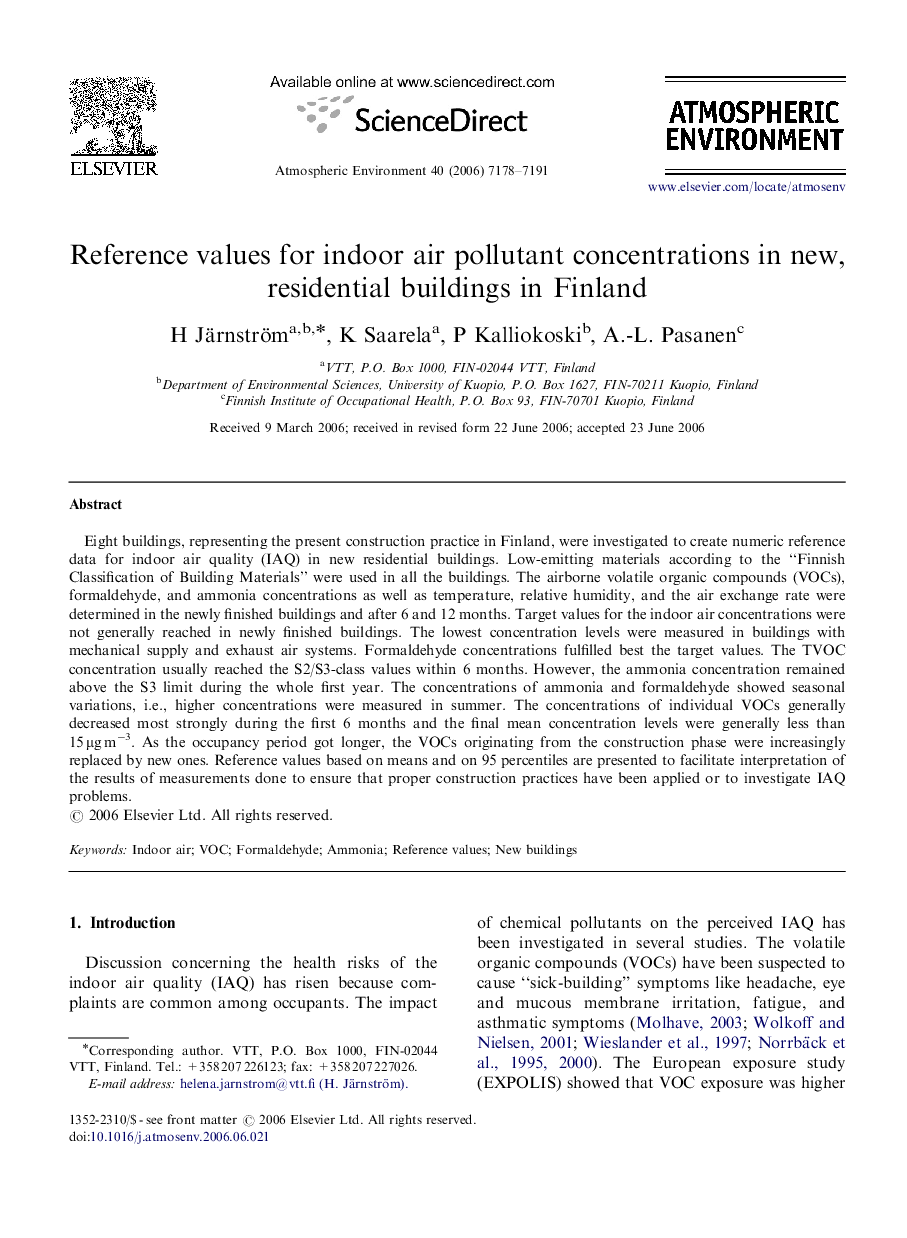| Article ID | Journal | Published Year | Pages | File Type |
|---|---|---|---|---|
| 4443766 | Atmospheric Environment | 2006 | 14 Pages |
Eight buildings, representing the present construction practice in Finland, were investigated to create numeric reference data for indoor air quality (IAQ) in new residential buildings. Low-emitting materials according to the “Finnish Classification of Building Materials” were used in all the buildings. The airborne volatile organic compounds (VOCs), formaldehyde, and ammonia concentrations as well as temperature, relative humidity, and the air exchange rate were determined in the newly finished buildings and after 6 and 12 months. Target values for the indoor air concentrations were not generally reached in newly finished buildings. The lowest concentration levels were measured in buildings with mechanical supply and exhaust air systems. Formaldehyde concentrations fulfilled best the target values. The TVOC concentration usually reached the S2/S3-class values within 6 months. However, the ammonia concentration remained above the S3 limit during the whole first year. The concentrations of ammonia and formaldehyde showed seasonal variations, i.e., higher concentrations were measured in summer. The concentrations of individual VOCs generally decreased most strongly during the first 6 months and the final mean concentration levels were generally less than 15 μg m−3. As the occupancy period got longer, the VOCs originating from the construction phase were increasingly replaced by new ones. Reference values based on means and on 95 percentiles are presented to facilitate interpretation of the results of measurements done to ensure that proper construction practices have been applied or to investigate IAQ problems.
